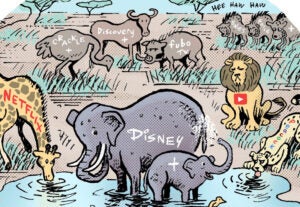Here’s today’s AdExchanger.com news round-up… Want it by email? Sign up here.
Cook The Books
Google is warning recipe bloggers to post pertinent information (which is to say, the ingredients and recipe) in visible, accessible parts of their site or risk being down-ranked in search results.
“To me, this seems like some sort of warning about an upcoming Google search algorithm update that might target those really long-winded, SEO-written recipe blogs and pages,” writes Barry Schwartz at Search Engine Roundtable.
Recipe sites are an interesting case study. The cruddiness of recipe blogs is an old internet joke. If writers put the ingredients and recipe at the top of the page, people would dip too quickly. To generate metrics that satisfy online ad systems – viewability, time on page, scrolls, clicks, etc. – publishers post miscellaneous content on top so users have to scroll to find the actual recipe.
One could argue that these sites fall into the made-for-advertising bucket, although Google’s term for this kind of content is “fluff” (seriously). But while the MFA label may be too strong in this case, these sites are clearly user-unfriendly and exist primarily to game ad tech yield.
It’s the kind of thing Google is bad at spotting in an automated way, so it also needs recipe bloggers to self-regulate.
The Duplication Dupe
Supply-path optimization shines an uncomfortable light on programmatic inefficiencies.
Now, bid duplication is in the spotlight.
Earlier this month, a whistleblower accused FreeWheel’s Smart Bidding solution of serving duplicate bids to inflate CTV auction demand. FreeWheel denies any impropriety, claiming its solution is still in the testing phase and any bid duplication will be weeded out.
Nevertheless, it remains widespread across the ecosystem. Fact is, programmatic incentivizes duplication, Adweek reports.
Publishers feel compelled to duplicate bid requests because even the appearance of more demand for their inventory can improve bid rates.
Pricing issues aside, duplicating bids also reduces the transparency advertisers have into the inventory they purchase, which may fly for YouTube and Facebook but is a major faux pas for third-party programmatic.
Meanwhile, buy-side platforms like The Trade Desk are introducing methods to crack down on bid duplication. These measures have been successful at mitigating the problem, says Will Doherty, TTD’s VP of inventory development, but “it’s certainly far from solved.”
Stores of Value
Retailers like Walmart and Target embraced produce and grocery sales because the category has extremely high customer loyalty – or, more accurately, consistent return traffic.
The idea has always been to become part of people’s grocery-shopping routine – and then encourage them to also fill their cart with higher-margin products, like home decor, consumer tech and fashion.
Why do we bring this up?
Walmart just unveiled 117 remodeled stores with floor layouts that push shoppers to expand their carts, both in-store and online. Meanwhile, Target’s new store design, which was revealed in November 2022 and is slated for a wider rollout next year, includes double-wide aisles to accommodate storing and displaying larger products.
Both Target and Walmart are also heavily invested in new shopper marketing programs – and the new store layouts are built around BOPIS. (For the uninitiated, that’s buy online, pick up in-store).
Walmart’s announcement cites new in-store “digital touch points” for product searches and descriptions. “And don’t forget the Walmart+ express lane or the touch-free ease of Walmart Pay,” according to the release. Okay, we won’t.
But Wait, There’s More!
Why media agencies remain the cornerstone of holding group profitability. [Digiday]
A news publisher trade group says AI bots are trained heavily on news content. [NYT]
Begun, the race to regulate AI has. [Bloomberg]
Connectly, a conversational commerce tech startup, raises $7.8 million in Series A funding. [release]
You’re Hired!
WPP’s Lindsay Pattison moves from overseeing clients to staff. [Campaign]













